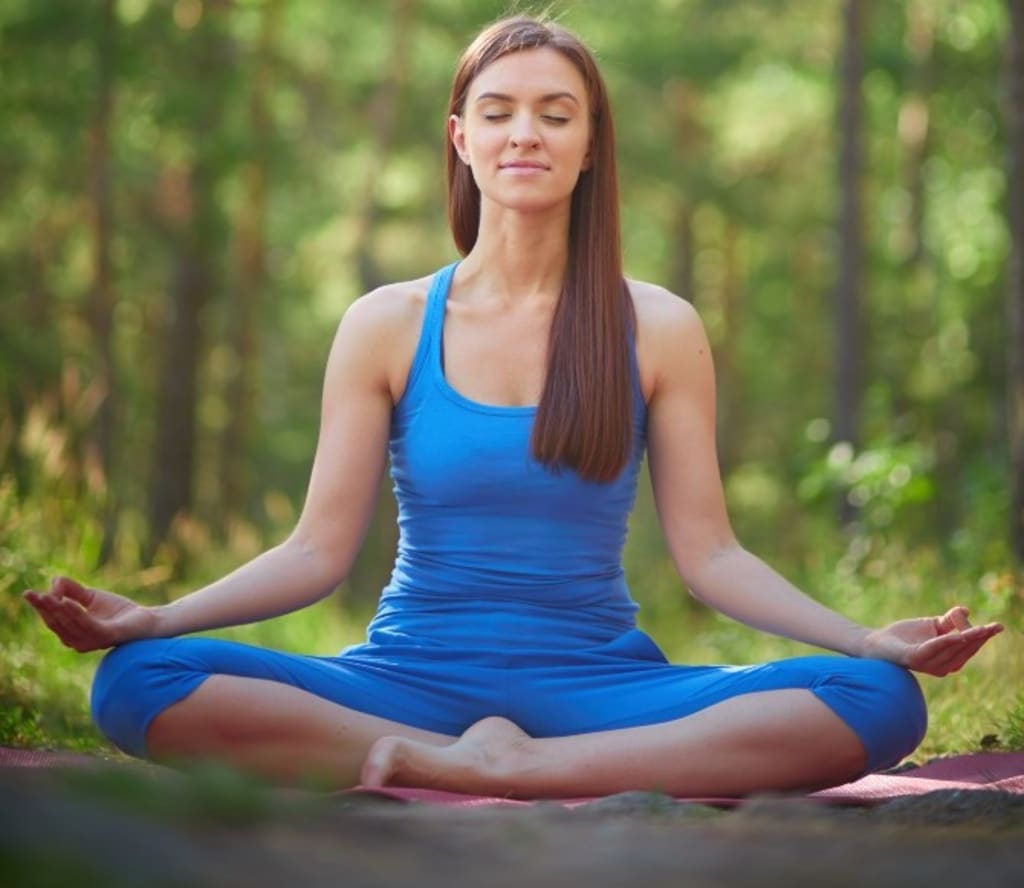Use Yoga to Rejuvenate and Age Well
Yoga is an integrative spiritual practice aimed at developing the physical, emotional, mental and spiritual aspects of our being. Yoga has been proven to regulate physiological functions. Recent advances in research have shown that the benefits of steady and regular yoga practice have a sound scientific basis.

Balance and Coordination
Yoga is a health-enhancing practice, especially for people who are 50 years and older. Regular and safe practice of yoga lessens the negative impact of stress and reduces levels of tiredness in healthy seniors.
Good balance can be challenging for some people. Aging brings changes easy to notice mainly during movement. As we age, we start facing physiological changes in energy, balance, speed, strength, endurance, and some health issues.
Balance starts to decline between 40 to 50 years of age. The National Institute of Health reports that one in three people over the age of 65 will experience a fall each year.
Balance is the ability to keep a position, recover, and react from what could confuse or disorient us, and if someone falls to be able to fall without injuring oneself. Coordination is the ability to do well a movement through space.
Balance and coordination depend on the collaboration of many body organs and systems including the eyes, ears, brain and nervous system, and the cardiovascular and musculature systems. A Harvard study found that exercise programs for seniors, which can include balance training with yoga poses, reduces falls that cause injury by nearly 40 percent.
People of all ages are embracing the practice of yoga to improve health and overall well-being.

The American Osteopathic Association says that yoga provides a number of physical and mental health benefits, which include “lower blood pressure, a reduction in back and other chronic pain, increased flexibility and muscle strength, stress relief, and increased concentration”.
Research Study
The health benefits of doing yoga in a safe and regular way are supported by research proof.
A study was done in 2016 to explore if a seven-week yoga intervention could improve physical function, perceived stress, and emotional and mental wellness in senior participants.[i] This study was led by a panel of researchers that comprised Eric Lindahl, Katherine Tilton, Nicole Eickholt, and Lisa Ferguson-Stegall.
The key findings of this study were:
Yoga does improve mental wellness, exhaustion, and stress levels in the elderly.
These improvements can come about even if no betterment in physical function occurs.
Breathing Techniques or Pranayama
The breathing techniques in yoga can change the dimensions of the rib cage. This allows more air into the lungs. The rib cage benefits from increased expansion and contraction. This helps to prevent the loss of flexibility of the rib cage that comes with age.
Pranayama increases energy, purifies the circulatory system that carries oxygen, nutrients and hormones to cells, and removes waste products from the body like carbon dioxide. It helps promote mental clarity and well-being.
Nerves
Sage Rountree wrote an article on the “15 Anti-Aging Health Benefits of Yoga That Will Make You Want to Start Practicing Now”. Her article was published in the Yoga Journal in July of 2017. One of her talking points in this article was on pain due to nerve issues.
Neuropathy is one of the common neurological disorders that affect seniors. This nerve disorder causes numbness and weakness, often affecting the hands and feet.
When nerves are damaged, they can cause pain, weakness, lack of feeling, restrictions, or itchiness and inflammation. In peripheral neuropathy, this is felt in the hands, feet, fingers, and toes.
There are methods to minimize the chances of a neurological disorder. Controlling risk factors such as smoking, high blood pressure, high cholesterol, obesity and lack of exercise is helpful. But increased awareness of what worsens or relieves pain helps make better choices with movement practices. Safe and regular yoga practice helps seniors find out what works for their nerves as their body awareness improves with special techniques and regular practice.
The more seniors become aware of what aggravates or alleviates pain or numbness, the better they are able to make wise choices with their movements. Yoga allows them to explore their body in slow, safe movements. It gives them the opportunity to get to know what works for their nerves, as they are guided to move slowly and pay careful attention to the response of their bodies in each pose.
Props
Yoga practice for seniors is different from regular yoga classes.
Props such as belts, blocks, chairs, blankets, and even the walls are used to help ease the practice. Detailed instructions are given and the pace is slow to accommodate their energy levels. Fewer poses are done and most of the time, the practice targets the areas of concern and pain.
Cautions for all Poses:
Avoid what causes or increases pain.
Stop doing a pose if you feel a sharp sensation in your joints.
Stop doing a pose if you feel a sharp, shooting sensation down the limbs.
Avoid what causes numbness in the limbs.
Avoid what makes you feel you cannot breathe well.
Because we all have differently shaped bones and bodies, not all postures will look the same for everybody. Some postures may or may not be accessible without modifications.
Stop doing a pose when you feel dizzy.
Follow your doctor's orders. After surgery, ask your doctor what you can do and when.
Questions & Answers
Is it a waste of time to start yoga in our golden age because our body has become rigid?
Yoga can be practiced by people of all ages. The benefits start from the first class. It may take a while to undo the tightness, but with regular practice, you will notice an improvement in your flexibility and your range of motion.
What are the benefits for seniors people who have an injury or dealing with chronic pain?
Yoga for seniors lessens the negative impact of stress and improves breathing capacity, flexibility, and strength. This gives people a natural way to manage pain. Some seniors see a decrease in the need for pain medication.
Poses that hold the body for some time while supported by props, can provide relief and relaxation in a therapeutic way.
Is there any medical condition for which yoga is not recommended?
Talk to the yoga teacher who will accommodate your request. For example, seniors with limited mobility can do yoga using a chair or the wall.
Yoga for healthy aging adapts regular yoga poses to suit the special needs of seniors including age and abilities. Seniors are met where they are.
How often should we attend yoga classes?
Usually, it is good to attend two to three classes a week.
What if a senior wants to do yoga alone at home?
Dr. Baxter Bell is the author and writer of Yoga for Healthy Aging: A Guide to Lifelong Well-Being book. He teaches Yoga for Healthy Aging in an online yoga practice series. I have viewed several of his online classes and recommend his online classes.
About the Creator
Vimal R
health and fitness





Comments (1)
https://vocal.media/lifehack/is-your-child-battling-dry-eyes-know-its-causes-and-symptoms